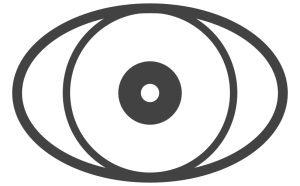From The Motif Series
Tracing is one of the most ancient gestures of inquiry. To trace is to follow without claiming to know; to touch with attention rather than with mastery. In the studio, tracing operates as both method and metaphor—an act of following lines, gestures, or residues that guide ethnographic perception. It refuses the authority of mapping from above and instead commits to a tactile engagement with the world’s contours.
Tim Ingold (2007) famously distinguishes traces from connectors: where the latter link fixed points, the former mark a continuous movement. In Lines: A Brief History, Ingold argues that life itself unfolds along lines of becoming, and that to trace is to “follow the materials, not to describe them” (Ingold 2007, 72). For the studio ethnographer, tracing becomes a form of walking, drawing, and thinking—a mode of attunement that joins the bodily, the spatial, and the conceptual.
Bruno Latour (1990) described actor-network theory as “a sociology of translations,” where relations are not pre-given but traced through their connections. To trace, for Latour, is to make associations visible without freezing them into a system. Tracing is thus a descriptive ethics: it acknowledges the provisionality of connections and the opacity of networks. This has clear resonance for multimodal ethnography—where the map, diagram, or drawing is not a representation but a speculative proposition.
Feminist scholars have extended the notion of tracing toward care and maintenance. María Puig de la Bellacasa (2017) describes care as a practice of “keeping connections alive,” an ongoing tracing of relations that sustain life. Tracing, here, becomes a slow ethnographic labor: listening, following, re-attuning. Donna Haraway (2016) likewise speaks of “staying with the trouble” as a form of continuous tracking—refusing to resolve tensions too soon. These insights turn tracing into a politics of persistence, a way to dwell in the unfinished.
From an artistic and cartographic perspective, tracing can also be a counter-gesture to surveillance and control. Rebecca Solnit (2001) in Wanderlust reminds us that walking—the bodily form of tracing—produces maps that are lived rather than drawn. In your Materialtone and Tin Ethnography projects, tracing occurs when a line on a notebook or tin lid registers a sensory encounter: a smell turned into a contour, a sound translated into a wavering path. Tracing thus becomes a mode of ethnographic translation: the conversion of experience into gesture, gesture into form.
Tracing, then, is not a search for precision but for intimacy. To trace is to follow the world’s handwriting, to sense the pressures that move through it. The line drawn by the ethnographer is never purely theirs—the surfaces, materials, and rhythms of the field co-author it. The studio becomes a space for re-tracing: revisiting gestures, overlaying paths, looping back through residues of thought and matter.
Studio Exercises — Tracing as Attunement
Exercise 1: The Walking Line
Choose a short walk—around your block, across a market, or inside your studio. Hold a small notebook or a folded sheet of paper against your palm. With a soft pencil, let your hand trace continuously as you move, without looking at the line. The resulting drawing will not resemble space; it will register rhythm, hesitation, vibration. When finished, annotate the drawing with sensations rather than locations (breeze, smell of oranges, friction). This is your haptic map.
Exercise 2: The Residue Sheet
Place a thin sheet of tracing paper over a page of old notes or a photograph. With a graphite stick or charcoal, gently rub until textures emerge. Let the trace blur edges and merge surfaces. Label the sheet with what has been recovered and what remains missing. Hang it on a window; watch how light alters its legibility. Write a brief reflection titled What the Trace Refuses.
Exercise 3: Relational Diagrams
List five entities from your fieldwork—human or otherwise. Draw lines connecting them, but each time you draw a line, pause and describe aloud what passes along it: a smell, a debt, a vibration, a rumor. Use color or texture to differentiate types of relation. The diagram should feel alive, provisional. When done, fold it once and store it in your field notebook. This act of folding “freezes” the relations—until the next tracing begins.
Exercise 4: Temporal Overlays
Take three sheets of transparent acetate or tracing paper. On each, draw your memory of a site at a different time (morning, afternoon, night). Overlay them and secure with tape. Observe how lines multiply and obscure one another. The overlapping becomes a visual form of field memory—a layered temporality of perception. Photograph the composite and annotate it with small notes on rhythm and atmosphere.
Exercise 5: Sound as Line
Record a brief ambient soundscape from your field site. Play it back and, on a blank sheet, move your pencil to reflect the sound’s pitch, rhythm, and intensity. Don’t aim to represent but to translate. When finished, look at the drawing as a score of encounter. Repeat this with another sound recorded elsewhere and overlay both drawings. What patterns of resonance or interference emerge?
References
- Haraway, Donna J. 2016. Staying with the Trouble: Making Kin in the Chthulucene. Durham, NC: Duke University Press.
- Ingold, Tim. 2007. Lines: A Brief History. London: Routledge.
- Latour, Bruno. 1990. “Drawing Things Together.” In Representation in Scientific Practice, edited by Michael Lynch and Steve Woolgar, 19–68. Cambridge, MA: MIT Press.
- Puig de la Bellacasa, María. 2017. Matters of Care: Speculative Ethics in More Than Human Worlds. Minneapolis: University of Minnesota Press.
- Solnit, Rebecca. 2001. Wanderlust: A History of Walking. New York: Viking.

